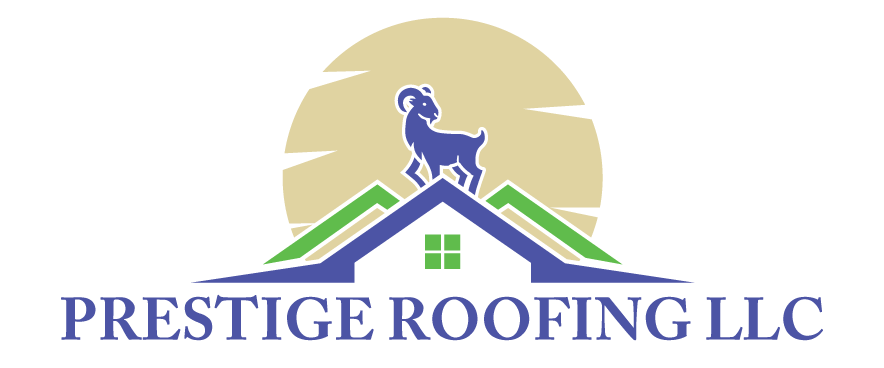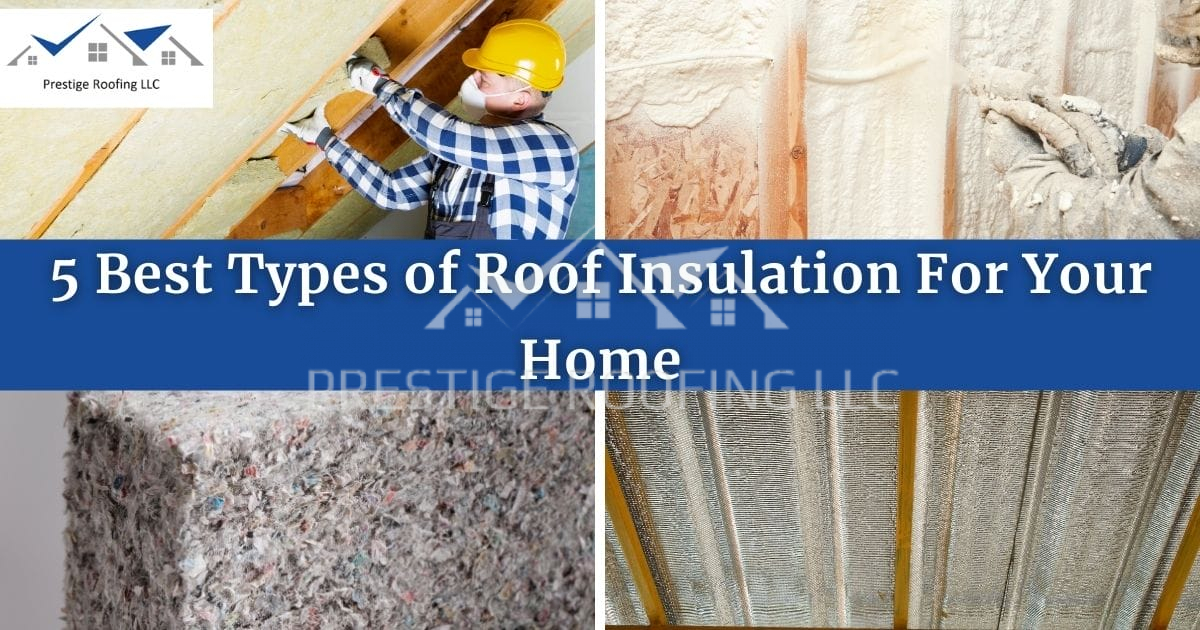Imagine having a property where your roof is unable to maintain the proper temperature, resulting in freezing winters and sweltering summers. When your roof is poorly or not insulated at all, that is what occurs. Nevertheless, it’s not as difficult as it seems to insulate your roof. Plus, it’s a really wise decision that improves comfort in your house while saving energy.
In this blog post, we’ll discuss which type of insulation is best for your house and what you should consider when making a decision.
What Are Some Different Types Of Roof Insulation?
As a homeowner, it is important that you know what the best roof insulation is for your home. Some of your options are:
1. Fiberglass Insulation
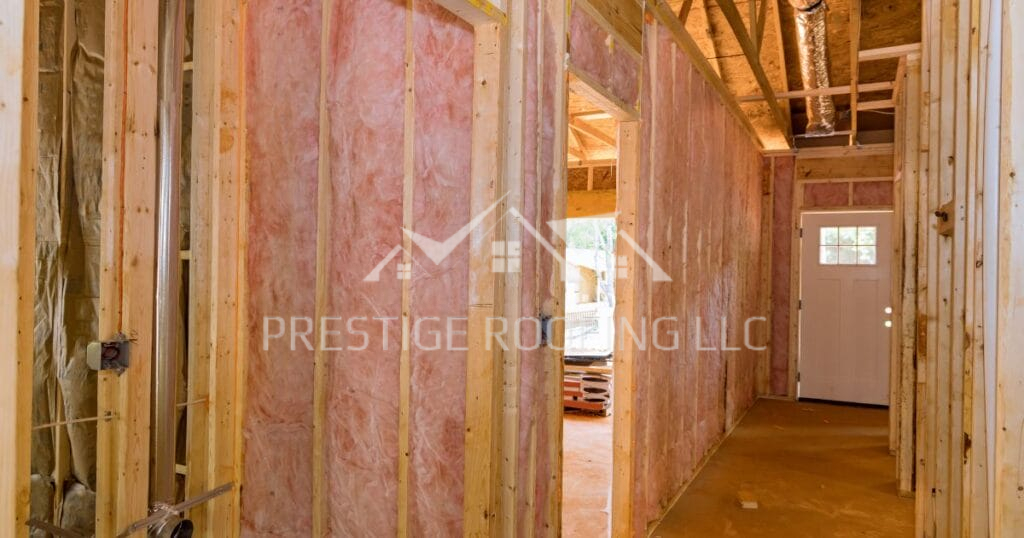
Fiberglass insulation is a type of insulation material made from tiny glass fibers. To make fiberglass insulation, glass is melted and spun into fibers, which is then coated with a special liquid and let cool. It’s used in walls, ceilings, and attics to keep heat, cold, and sound from getting in or out of homes. You can find it in different forms like batts, rolls, or loose-fill, depending on how you want to install it. It has a high R-value, which means it’s great at keeping your space cozy and energy efficient. Plus, it’s fire-resistant and usually doesn’t cause allergies, so it’s a safe choice for homeowners.
Benefits
- Cost-Effective: Fiberglass insulation offers an economical solution compared to alternatives such as spray foam or cellulose. This affordability helps homeowners reduce initial expenses as well as heating and cooling bills.
- Energy Efficiency: By effectively managing indoor temperatures, fiberglass insulation can cut energy consumption by up to 50%.
- Soundproofing: Fiberglass insulation serves as an effective barrier against noise pollution, absorbing and obstructing sound waves to create a quieter indoor environment.
- Versatile Usage: Available in various forms such as batts, rolls, or loose-fill, fiberglass insulation is suitable for diverse applications in buildings, including crawl spaces and attics.
- Fire-Resistant: Many fiberglass brands come with coatings that enhance their resistance to fire, contributing to improved safety within homes.
- Easy Installation: Thanks to its lightweight, flexible nature, fiberglass insulation is easy to handle and install, making it accessible to homeowners and contractors without the need for specialized equipment.
Cost: $0.50 to $1.50 per square foot
R-Value: R-2.9 to R-3.8 per inch
2. Spray Foam Insulation
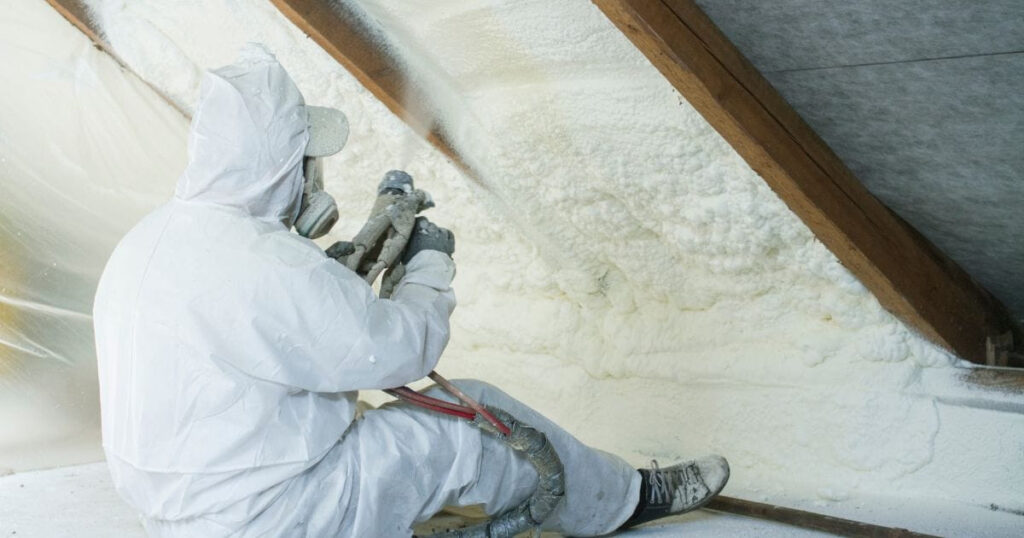
There are two types of spray foam insulation available: closed-cell and open-cell. Open-cell foam is more flexible, while closed-cell foam is denser and has higher R-values. Both varieties cling to surfaces well, providing excellent water and air sealing. It is versatile enough for both residential and commercial use because it is ideal for irregular spaces or difficult to reach areas and can be applied in a variety of locations.
Benefits
- Energy Efficiency: Spray foam insulation can reduce energy consumption by up to 20% compared to traditional insulation materials.
- Structural Integrity: Closed-cell spray foam insulation can reinforce the structure of a building, helping maintain its integrity.
- Moisture Resistance: Spray foam insulation is resistant to moisture, which helps prevent mold growth and structural damage.
- Sound Insulation: Open-cell spray foam is often used for sound insulation because it can block and reduce sound transfer.
- Ease of Installation: Spray foam insulation is easier to install than other materials as it expands to fill gaps, creating a seamless layer of insulation.
Cost: $1 to $4 per square foot
R-Value: R-3.6 to R-3.9 per inch
3. Cellulose Insulation
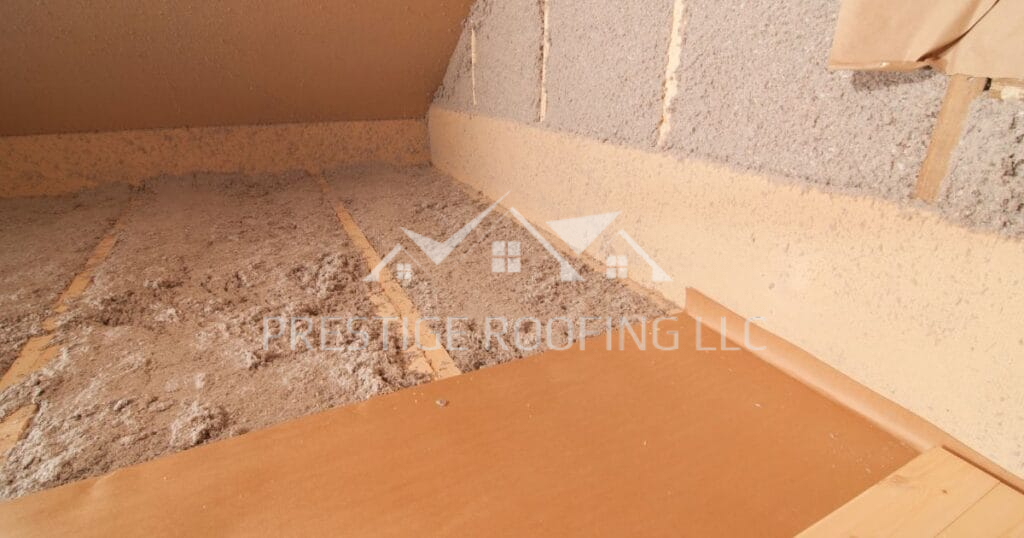
Cellulose insulation is used in wall and roof cavities to improve energy efficiency and prevent heat transfer. Regarded as one of the greenest insulation materials available, this is an environmentally friendly and sustainable option because it reduces noise, is draft-proof, and is made of recycled paper products like cardboard and newspapers. In addition to its environmental advantages, cellulose insulation is treated with chemicals that resist fire. Despite having a low starting cost, its lower R-value means that it might not be able to offset future energy costs completely.
Benefits
- Environmental Sustainability: Cellulose insulation is eco-friendly, using recycled materials as its main component.
- Thermal Performance: Cellulose insulation has an R-value similar to spray foam or fiberglass insulation.
- Fire Retardant: Treated with non-toxic compounds like borates, cellulose insulation is fire retardant and safe around wires and light fixtures.
- Moisture Management: Cellulose can absorb moisture without losing its insulating properties, making it perfect for areas with high humidity.
- Cost-Effectiveness: Despite a potentially higher initial cost than fiberglass, cellulose insulation can lead to long-term energy savings.
Cost: $0.60 to $2.80 per square foot
R-Value: R-3.2 to R-3.8 per inch
4. Reflective Foil Insulation
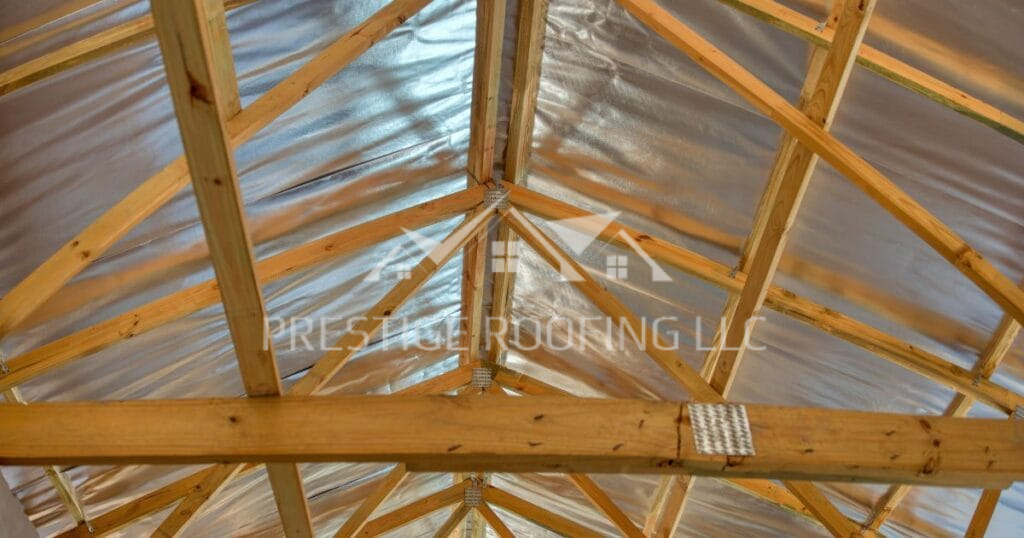
Reflective foil insulation, sometimes known as multifoil insulation, is a thin layer of thermo-foam, aluminum foil, and other materials. It is frequently used in attics, lofts, and roofs because of its ability to reflect radiant heat and lessen heat transfer. This insulation uses reflective materials to create a barrier against radiant heat. It provides excellent thermal performance to keep comfortable temperatures all year round and is lightweight and simple to install. It generally satisfies building standards for performance and quality and comes in a range of sizes. It can be installed continuously or between rafters and joists.
Benefits
- High Performance: It offers excellent thermal performance in a slimmer profile compared to traditional insulation materials.
- Energy Efficiency: This insulation reduces heat loss, leading to lower energy consumption and costs.
- Thermal Comfort: It helps maintain a comfortable indoor temperature year-round.
- Easy Installation: Simple to handle, install, and maintain, making it convenient for homeowners and contractors.
- Long Lifespan: The lifespan typically exceeds 50 years, ensuring lasting performance.
- Space Saving: Its slim profile allows for easy installation in tight spaces.
- Eco-friendly: Some companies use recycled materials such as aluminum, contributing to environmental sustainability.
Cost: $0.25 to $2 per square foot
R-Value: R-3 to R-17 per inch
5. Structural Insulated Panels
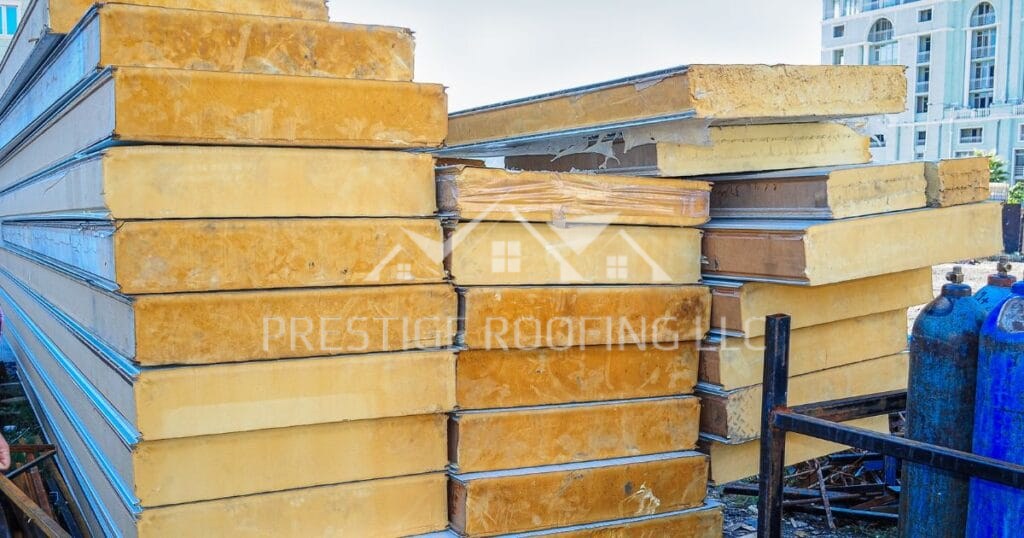
For almost any building, structural insulated panels (SIPs) offer many advantages and can be customized to fit a variety of building designs. They consist of foam sandwiched between two structural pieces, such as oriented strand board (OSB). They have rigid polyurethane or expanded polystyrene foam cores that are closed-cell, providing superior structural integrity and heat resistance. Their remarkable thermal efficiency, strength, and airtightness enable them to contribute to long-lasting and energy-efficient structures. SIPs are suitable for walls, roofs, and floors and can be installed quickly because of their adjustable thicknesses.
Benefits
- Energy Efficiency: SIPs are more energy-efficient than other types of insulation, reducing energy costs throughout the building’s lifetime.
- Airtightness: SIPs provide exceptional insulation and airtightness, lowering energy expenses and meeting LEED building standards.
- Environmental Impact: SIPs consume significantly less energy during manufacturing compared to traditional methods.
- Speed of Construction: SIPs can be tailored to fit any building design, offering homeowners customization options while speeding up construction.
- Cost-Effectiveness: SIPs are easy to install and require less labor, potentially leading to cost savings during construction.
Cost: $10 to $18 per square foot
R-Value: R-5 to R-17 per inch
Also Read: Roof 101: Your Pictorial Guide To The 19 Essential Parts Of A Roof
Understanding R-Values for Roof Insulation
When selecting roof insulation, it is essential to understand R-values. Thermal resistance, or the ability of insulation to withstand heat flow, is represented by an R-value. The better an insulation’s resistance to heat transfer, the higher its R-value. But, it’s important to note that certain materials can still provide sufficient insulation even if they have a lower R-value.
When choosing roof insulation, if energy efficiency is a priority, then high R-values are crucial. In the winter, they help retain heat, which lowers heating bills, and in the summer, they keep hot air out, which lowers cooling expenses. It’s important to remember that while higher R-values typically indicate better insulation, other factors that affect effectiveness include location of the home and the quality of the installation.
Factors to Consider When Choosing Roof Insulation
Climate Considerations:
Knowing the climate in your area will help you choose the appropriate insulation for your roof. The performance of various insulation materials varies according to the weather. A high R-value insulation is the better choice in regions with harsh weather. This offers exceptional resistance to heat transfer, guaranteeing year-round comfort in your home. In contrast, medium-grade insulation may work well in more temperate climates and provide a useful and affordable option.
Compatibility with Roofing Materials and Structures:
When choosing insulation, ensure it aligns with your roof’s structure and materials. Consider joist spacing and roof design. Fiberglass batt suits standard spacing, while spray foam is flexible for irregular spaces. If your roof has a steeper slope, think about which insulation type is best for the shape of the attic. And if you are still unsure, seek guidance from a roofing contractor to ensure compatibility and enhance the comfort and energy efficiency of your home.
Conclusion
Choosing the right roof insulation is crucial for maintaining the warmth in your home, reducing energy costs, and protecting the environment. There are various kinds of insulation, and each has advantages and considerations. Therefore, take into account your needs, your location, and your financial situation before making a decision.
For the best roofing services in De Pere, WI, contact Prestige Roofing. Our team of professionals is available to offer you premium roofing solutions that are customized to meet your requirements. To find out how we can assist you with your roofing needs, get in touch with us at (920) 791-0414.
